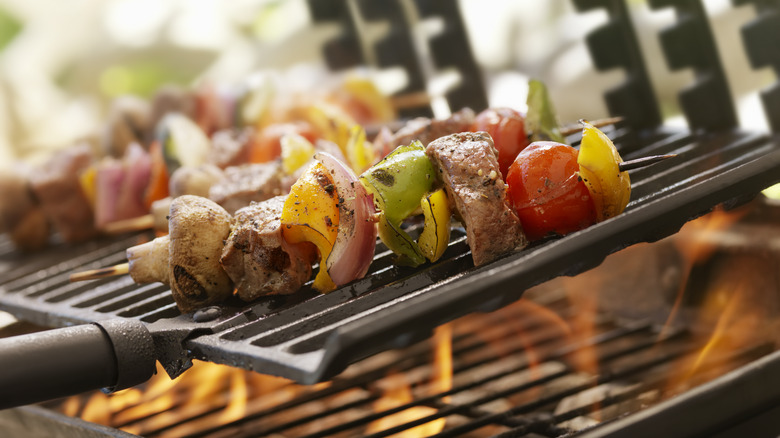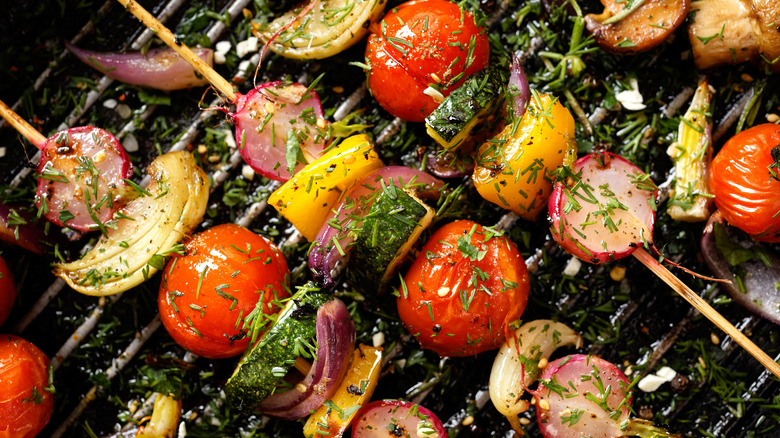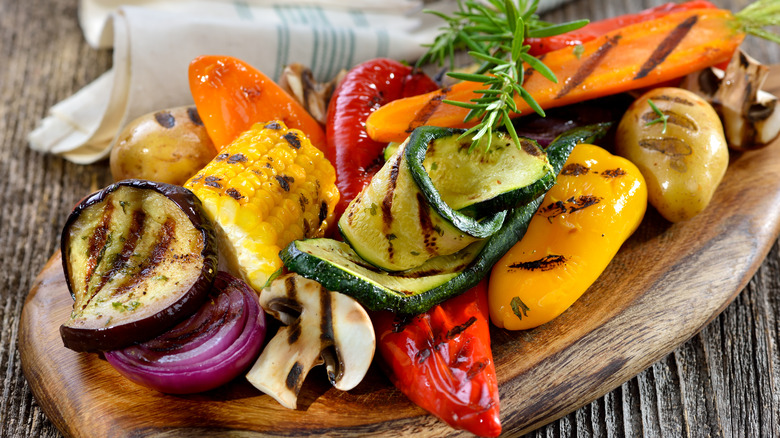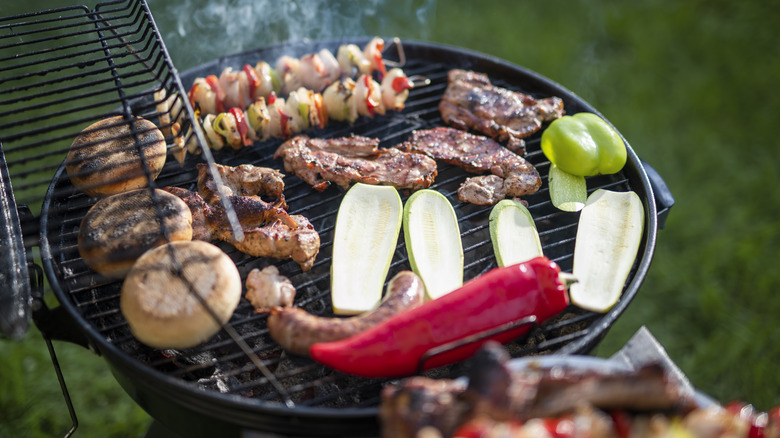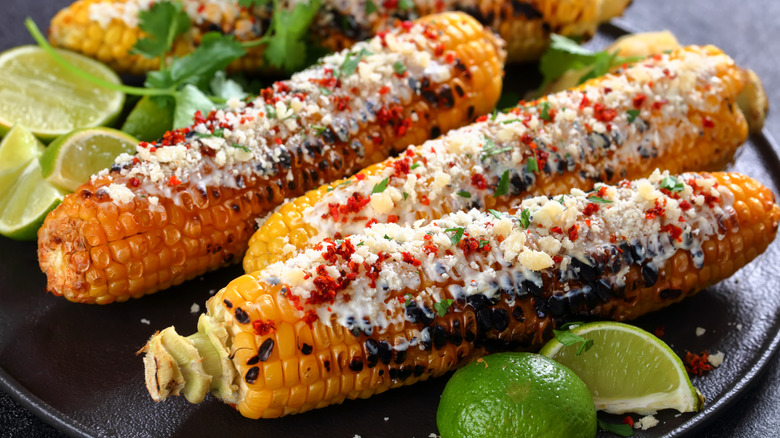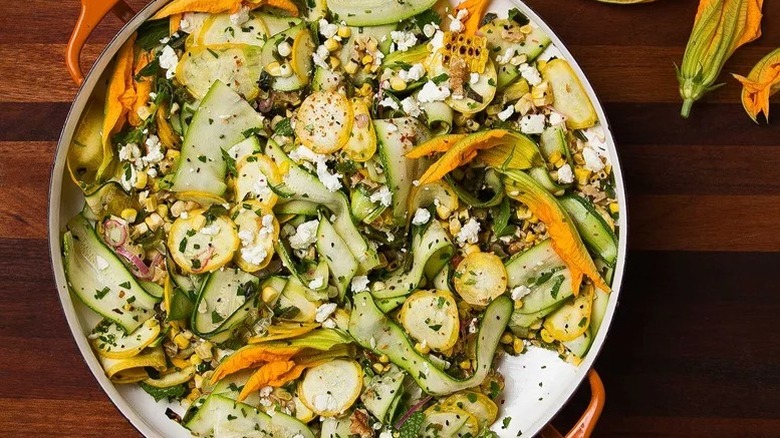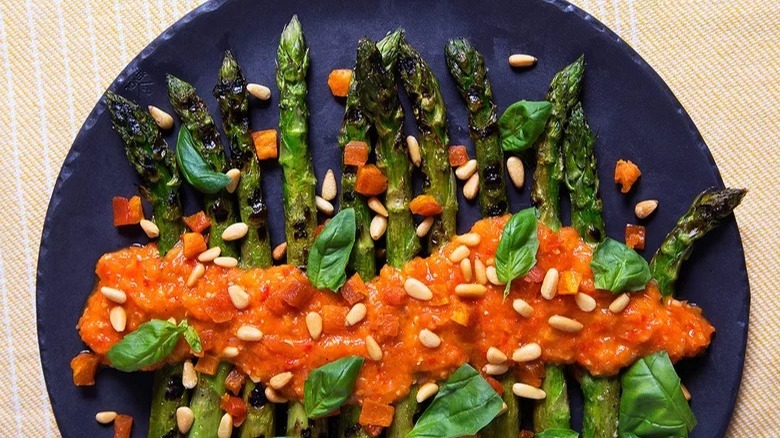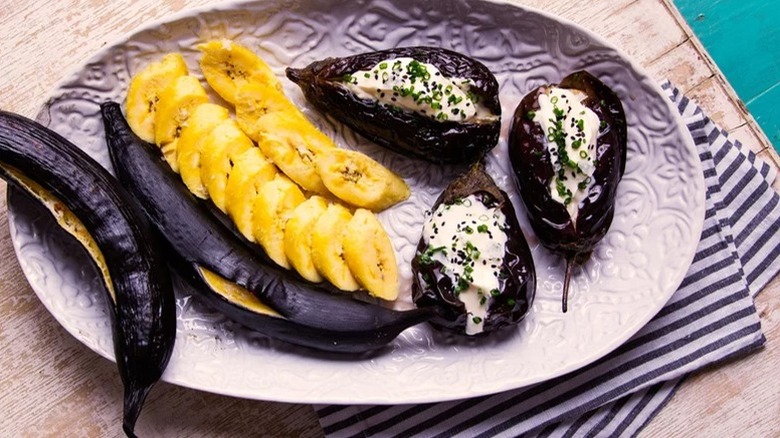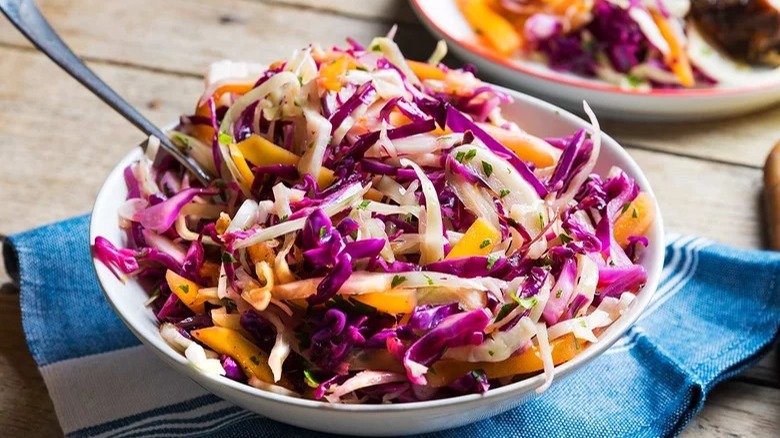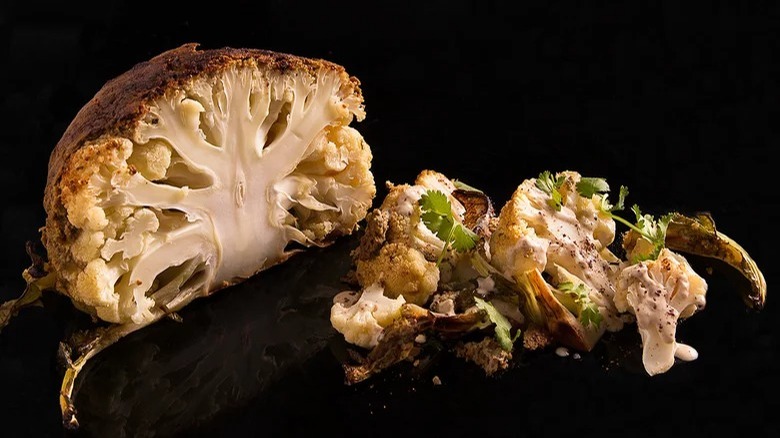How To Grill Vegetables
It's Sunday, you're at a BBQ and you sit down to cut into your meaty, smoky plateful with a steak knife. You take a bite that's simultaneously salty, savory and sweet, and wash it down with a tall, cold beer. No, we're not describing you devouring a New York strip pulled hot off the grill. Instead, we're talking about vegetables.
From hearty grilled eggplants to stuffed charred peppers and heavily marinated zucchini, vegetables are having a moment in the summer sun. Now, we know what you're thinking: I've been grilling vegetables for years. We have, too. But we think it's about time you actually treated those vegetables like meat and discover a whole new set of recipes to play around with.
One of the best ways to coax out a vegetable's flavors and give it the barbecued love it deserves is to prepare, season, grill, smoke and char that veggie like you would a piece of steak or chicken. Don't know where to start? Take a page from the chefs all over the country who are embracing these techniques, creating unique, vegetable-centric dishes without ever losing that distinctive taste of a summer cookout. Most of their best tricks translate perfectly to the home cook, meaning you can have the best grilled vegetables of your life from the comfort of your own backyard.
We chat with bona fide barbecue expert Steven Raichlen, executive chef Joya Carlton of new NYC vegan spot Orchard Grocer and chef Norberto Piattoni of veg-focused Metta in Brooklyn to find out how they're making vegetables taste meaty and smoky—and how home cooks can follow their lead.
In the end, it all comes down to a few main techniques: seasoning, grilling and smoking.
Seasoning
Just as marinating or using a dry rub works wonders on a piece of meat, so too does liberally seasoning your vegetables. Chef Carlton (who works wonders on vegetables in a way even carnivores would love) has a few tricks for turning ingredients like carrots and jackfruit into meaty delicacies.
"For our carrot 'lox,'" Carlton says, "we use a rub consisting of ingredients like brown sugar, salt and juniper berries, similar to what you would use to season a piece of pastrami. The rubbing helps get rid of a lot of the natural moisture in the vegetables as well, making it easier to cold smoke."
When it comes to her pulled BBQ jackfruit, the chef also marinates the breadfruit cousin in a signature barbecue sauce, saying, "The longer it's in the sauce, the better it will taste." When the jackfruit's cooked, it pulls apart like pork. However, "it doesn't have to be cooked low and slow, because there are no fibers to break down like there are in meat," she explains.
The signature sauce in question is a house-made vegan blackstrap molasses barbecue sauce with pomegranate and ginger (get the recipe); it's the perfect accompaniment to veg- and meat-centric dishes alike. According to Carlton, the sauce is great for eggplants, mushrooms, zucchini and tofu. "I always brush more of the sauce on after it's grilled, which you can do without worry (unlike extra marinade that has had raw meat in it)," Carlton says.
At Metta, vegetables like cauliflower, beets and cabbage are getting the meaty treatment as well. Chef Piattoni explains, "We serve smoke-roasted whole cauliflower heads the way you might slow-roast a big piece of meat. The cauliflower is coated in a rub of sweet paprika, spiced paprika, coriander, garlic and onion powders, salt, pepper, and honey, and then let it marinate overnight before roasting slowly in a smoker; then we serve it with a pickled vegetable sauce gribiche."
Pro tip: Spice rubs and sauces you might think are "made for" meat can actually be a vegetable's best friend, like our three-ingredient dry rub.
Grilling
For many, the promise of long summer nights signifies only one thing: grilling season. Whether you're firing up the grill on your expansive backyard deck in the suburbs or crowding steaks onto a grill pan in your NYC apartment, that charred, hot-off-the-coals taste has undeniable appeal. But what if that craving for fire-fresh food is diverted from baby back ribs and barbecue chicken to fat, grill-marked asparagus and smoky-sweet corn?
Unsurprisingly, you're not alone in these cravings. Metta is just one of the restaurants in NYC and beyond that is answering the call for meaty grilled vegetables. As Piattoni explains, "For our beet dish, the beets are boiled, and then seared on the plancha (griddle) the way you would a piece of steak to give them a charred exterior, which adds another layer to the dish."
TV host and author Raichlen, who's written 30 books on modern barbecue and founded Barbecue University, lays out a few tips for giving your vegetables some grilled love at home, too.
When it comes to grilling, not all vegetables are created equal, he reminds us. Different types of veg require different grilling styles.
"Use direct grilling for high-water-content vegetables like peppers, onions, mushrooms, asparagus and corn on the cob. Use indirect grilling for dense vegetables like potatoes, sweet potatoes, carrots and beets."
If you're making kebabs, "skewer your slender vegetables," he advises. "When grilling skinny vegetables like asparagus, snap peas and okra, skewer multiple pieces together crosswise so they don't slip between the bars of the grate."
Raichlen also suggests creating different heat zones on the grill to prevent food from burning: hot, medium and cool safety zones. "If your food catches fire, or you'd like to keep it warm once it's cooked, simply move it over to the cool zone." Pile up a thick layer of coals over a third of your grill, use a single layer of coals in the middle and forgo coals altogether on the opposite side. On a gas grill, turn the left or rear burner on high, the center burner on medium, and the right or front burner off completely.
Smoking
As Piattoni says, "The truth is you won't taste fire unless you use fire." This goes for both meat- and vegetable-centric dishes. Luckily, however, there are myriad ways to achieve that smoky, fire-induced flavor in your favorite produce that don't require an open flame. "You can char veg and bread on a stovetop flame (carefully)," he goes on, "or you can blend charred bread into other sauces, or use a bit of spicy paprika."
And while smokiness can certainly be achieved over a charcoal grill or in a smoker, Carlton has a technique for "chasing that smoky flavor" without a grill.
"First, open the windows!" she says. "Then, double-line a wok or Dutch oven (one with a tight-fitting lid) with aluminum foil, and add two tablespoons of brown sugar, two tablespoons of rice and one tablespoon of whole-leaf tea. Place a lightly oiled cooking rack over the smoking ingredients. Put your veggies or tofu on the rack. Turn the heat up to high until you see thin wisps of smoke. Reduce the heat to medium low and cover [the rack] with a foil-lined wok lid. Smoke for 15 minutes, turn off the heat and let stand five minutes.
"This is something that really works in apartments. It's a little scary the first time, because of all the smoke, but the flavor is amazing!"
At the end of the day, whether you're slathering your vegetables in a deeply flavorful barbecue sauce, charring them on the grill or smoking them indoors, their fresh yet meaty goodness can only enhance the summer barbecue dishes you love most. Trust us, carnivores: Zucchini, peppers and corn can finally hold a torch to your juiciest steaks and burgers.
This month, we're taking you Beyond BBQ into the deep, dark, drool-worthy corners of the 'cue world, from Seoul to South Carolina. Smoke will get in your eyes (and your cocktail) as we explore the best pits, tips, roasts and rigs—you might even see a vegetable or two along the way.
Grilled Mexican Street Corn (Elotes)
Slather this cheese mixture on corn cooked in a cast-iron pan or under the broiler for a little taste of summer, even in the dead of winter.
Grilled Corn and Summer Squash Salad
This crowd-pleaser is a magical pairing of charred corn and raw shaved summer squash, tossed with salty feta and smoky nigella seeds.
Grilled Asparagus with Apricot and Pine Nut Romesco
While we love this romesco over grilled asparagus in the spring, make it throughout the summer to spoon over grilled squash, eggplant or even grilled meats.
Grilled Plantains and Eggplants
Once grilled, the eggplants are treated like baked potatoes, filled with crème fraîche and chives, while the charred plantains are served alongside. It's a unique combo for your next cookout.
Grilled Cabbage and Mango Slaw
We go Caribbean with this vinaigrette, but you could also easily adapt it to a Southeast Asian flavor profile. Try a vinaigrette of lime juice, fish sauce, palm sugar and Thai chiles to transport your slaw across the globe.
Grilled Cauliflower with Tahini and Sumac
Pro tip: Place a piece of aluminum foil underneath the cauliflower to collect any oil that seeps out. The drippings pick up the smoke from the grill, making it the perfect sauce to drizzle over the finished dish.
